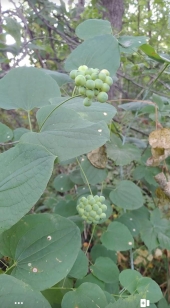I need advice on financial arrangements, landscaping, and anything else you can throw at me, from people who have hosted work-exchange type experiences on their land.
We are currently renting the second house to friends who are saving up. The discount off market rate is mostly due to the house not being ready for a rental (lots of duct tape patches, complicated procedures to keep pipes from freezing, etc.) We're fixing it, but when they move on, we'd like to keep the garden permaculture. We'd love to continue to rent to permaculture people who would do the work in exchange for a rent accommodation. Is this possible? It's a large newer home, and we need to charge half or 2/3 market rate, but we're very close to a town with ample employment. Here are some of the problems I don't know how to answer so far:
1. Prices for labor are crazy here, $150 per mow for landscaping companies. If the future tenants did not want to do the work, hiring someone to weed high value perennial beds (grapes, blueberries, apples, strawberries, raspberries) and brush hog or weed whack the rest of it, on 15,000 sf, would cost $$$, probably $2500 per month.
2. This also makes it hard to ask for a work-exchange for landscape maintenance, as anyone who would be potentially interested could just go mow lawns and make more money for their time. Unless I'm underestimating the tax burden--they are charging $300 per hour, but they may only be getting $50 per hour after overhead and taxes.
3. I had planted perennial herbs everywhere--culinary herbs and medicinal herbs, all the mints, echinacea, valerian, lady's mantle, bugleweed, etc. My friend is harvesting the herbs for her business, which I thought would be an incentive to maintain them, but she isn't putting time into maintaining the beds. She maintains the annuals beds instead, which makes sense from her point of view. Is it possible to design landscaping that is tenant proof but doesn't look like a bed of neon red plastic bark chips with an anemic ornamental every 20'? Or grass? With landscaping fabric perhaps? Mints will grow in mulch over fabric but so will grass and certain weeds.
4. In the future, could I hire someone as a gardener to maintain the beds and share the harvest with them instead? We do have a gleaner community, but I don't know that they would be incentivized to take care of the beds either.
5. I do have enough time to maintain the beds myself. Right now they are well mulched and were well-weeded until early/mid-spring. Next year they will need a little rehab after the neglect, but I could still do it. Should I hire myself as a gardener and take the harvest? How weird would it be to have your landlord also be the maintenance/caretaker?
6. She has expressed interest in putting goats in a corner of the yard that isn't used for production perennials. It's in native perennials right now and is the only part of the yard that isn't subject to extreme weed pressure. I've never kept goats but it's a small area, and it would be a highly fertile dirt field within a week. As long as we build adequate fencing (to keep them out of the blueberries, etc,) and a winter barn, and she keeps to organic principles, are there any other downsides to letting her put in goats? We had discussed her putting poultry there but she wants goats now.
I don't want to give the impression that she is taking advantage, because she is meeting all the conditions we set and thought reasonable. i wasn't sure how the rest of it was going to go, but now I know. Renting in a land-ownership culture just isn't great for the land, but I'd like to try my best to keep this little patch improving. Help me out! What do you think?







